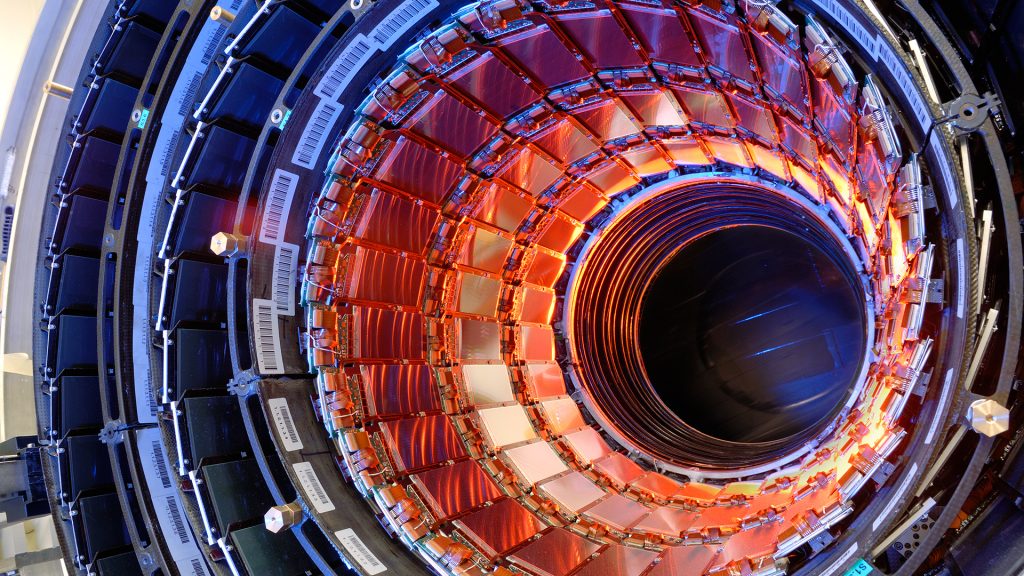
Detectors for the next-gen of large particle physics experiments
Felix Sefkow (DESY), Aurelie Pezous, Daniela Antonio (CERN), 11/06/2020

The first half of the CMS inner tracker barrel. The CMS (Compact Muon Solenoid) is one of the four experiments at the Large Hadron Collider (LHC), tasked with detecting the new particles that occur in the beam collisions at the centre of the experiment. It consists of three layers of silicon modules, which must withstand high doses of radiation and a 4T magnetic field without damage © Cern
Particle detectors and accelerators are used in particle physics research to probe big existential questions related to the origin of the Universe and its basic constituents. What was the origin of the Universe? What are we made of? Are there new kinds of matter or new forces of nature? AIDA-2020, a project co-funded by the European Commission under Horizon 2020, has made great research efforts to improve particle detectors’ performance in areas from software, data acquisition and microelectronics, to cryogenics, gas detectors, and calorimeters for the next generation of accelerator projects. AIDA-2020 came to an end in April 2020, but its many advancements will continue to support future fundamental research and technologic developments with applications in various domains.
Read more at the new issue of The Innovation Platform.
